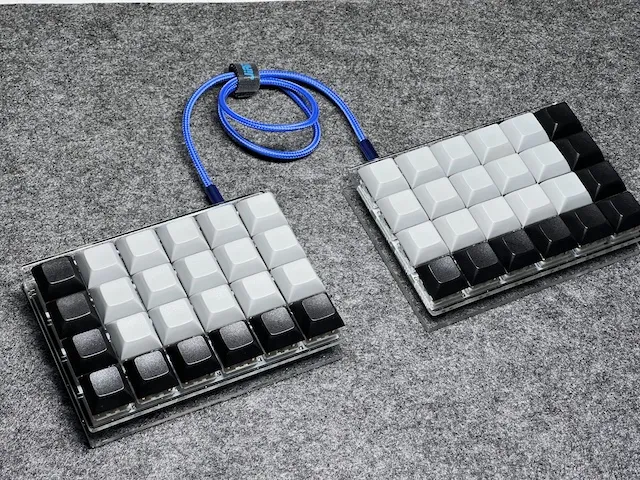Choosing your first ergonomic keyboard is an important step. The right choice can make your work more enjoyable and productive; the wrong one can discourage you from continuing. This guide explains what truly matters, shows how to evaluate options, and recommends beginner‑friendly keyboards that balance comfort with familiarity.
Is There a Perfect Ergonomic Keyboard?
Short answer: no. There’s no universal ergonomic keyboard that fits everyone. Generally, the more ergonomic a keyboard is, the more it departs from the traditional layout—and the higher the learning curve. Conversely, keyboards that closely resemble standard ones are easier to switch to, but the comfort gains are usually smaller.
Personal preferences, hand size, the software you use, and your typing habits all play a role. Your goal is to strike a balance: maximize ergonomic benefit without overwhelming yourself during the transition.
Key Ergonomic Features (What To Look For)
What makes a keyboard ergonomic compared to a traditional one? In short, it’s a design - both physical and software‑level that supports human anatomy and natural movement.
Important features include:
- Split design
- Ortholinear (matrix) layout
- Column staggering
- Dedicated thumb keys
- Concave (sculpted) keywells
As a rule of thumb, the more of these principles a keyboard implements, the more ergonomic it tends to be. If you’re just starting out, focus on the features that give the biggest boost with the lowest learning curve.
For a deeper dive into these concepts, see: What Are Ergonomic Keyboards?
Split Keyboards: Align Shoulders and Wrists
A split keyboard lets you place each half at shoulder width. That keeps your forearms parallel and your wrists straight (neutral), instead of bending inward into a funnel shape.

Key differences when using a split keyboard:
- Forearms align with your shoulders instead of funneling inward
- Wrists stay straight rather than angled toward the center (less ulnar deviation)
- Chest opens and shoulders retract more naturally
If you spend a lot of time typing (developers, writers, analysts), this alignment can make a noticeable difference in comfort and long‑term hand health. Learn more here: Split Keyboards
Ortholinear Layout: Simpler, More Natural Finger Travel
Traditional row staggering is a legacy of typewriter mechanics—not ergonomics. Ortholinear layouts arrange keys in a neat grid that better matches finger movement, reducing awkward reaches.
To illustrate finger zones, imagine each nail painted a different color. The idea is to assign keys so each finger mostly moves up and down rather than diagonally.

Now compare finger assignments on a split ortholinear vs a standard keyboard. Notice how the columnar arrangement and the ability to angle halves to your wrists create straighter finger paths.

Background reading on why row staggering persists: QWERTY Keyboard and Its Two Flaws and Ortholinear Keyboards
How to Choose as a Beginner
My recommendation for most newcomers is to start with a keyboard that meets two core criteria:
- Split layout
- Ortholinear (matrix) grid
This combination delivers strong comfort gains while keeping the layout relatively familiar. Many common keys (Tab, Space, Backspace, modifiers) can remain in recognizable positions, which eases the transition.
Recommended Beginner Keyboards
These picks align with the split + ortholinear approach and are friendly to start with.
Let’s Split
Let’s Split is a compact, split, ortholinear keyboard that checks both boxes—making it a great first step into the ergonomic world.

Why it’s beginner‑friendly:
- Split halves align with shoulder width
- Ortholinear grid simplifies finger travel
- Familiar key placement is possible (e.g., Tab, Space, Backspace, modifiers)
Here’s a minimalist plexiglass variant:

You’ll find open‑source builds, kits, and prebuilt versions from many vendors. Customize switches, keycaps, and cases to your preference. Also available in my store: Let’s Split
Adox
Adox is an ortholinear keyboard I designed as a single body while reflecting the ergonomic spirit of a split layout. It reduces the mental jump for newcomers who prefer a one‑piece form factor but still want strong ergonomic benefits.

Highlights:
- Ortholinear grid for efficient finger paths
- Supportive angles that help keep wrists neutral
- Familiar overall shape eases transition from traditional keyboards
Summary
- There’s no perfect ergonomic keyboard for everyone—choose the right balance of comfort and familiarity.
- For your first ergonomic keyboard, a split, ortholinear layout offers strong benefits with a manageable learning curve.
- Solid beginner options include Let’s Split (split ortholinear) and Adox (ortholinear with a familiar, single‑piece feel).
If you want to compare more models and features, see the Ergonomic Keyboard Score Index.
Thanks for reading!
Bartosz
